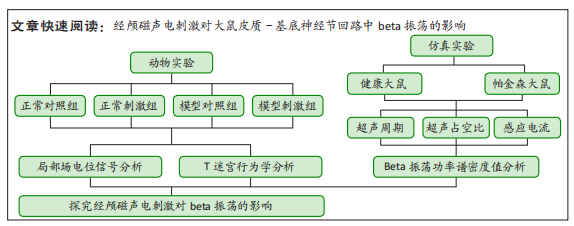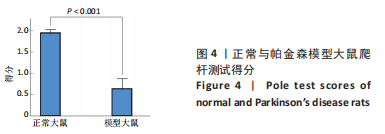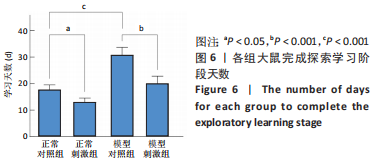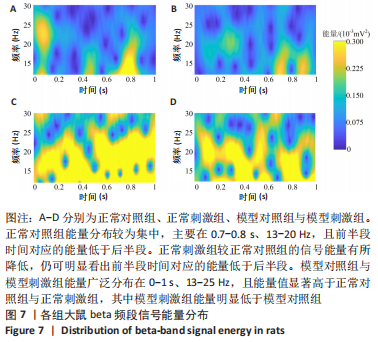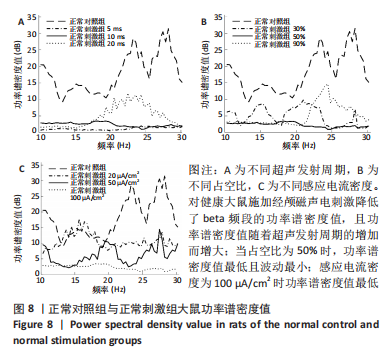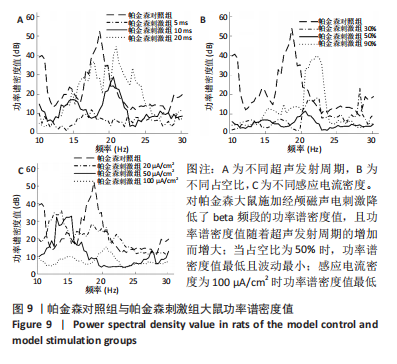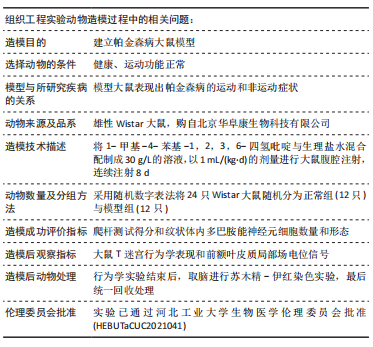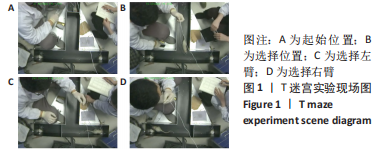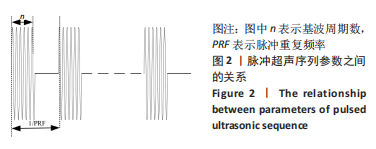[1] UNDERWOOD E. Short-Circuiting depression. Science. 2013;342(6158): 548-551.
[2] SHEN H. Tuning the brain. Nature. 2014;507(7492):290-293.
[3] BIKSON M, BESTMANN S, EDWARDS D. Transcranial Devices are not playthings. Nature, 2013;501:7466.
[4] ZHANG S, CUI K, ZHANG X, et al. Effect of transcranial ultrasonic-magnetic stimulation on two types of neural firing behaviors in modified izhikevich model. IEEE T Magn. 2018;54(3):1-4.
[5] NORTON SJ. Can ultrasound be used to stimulate nerve tissue? Biomed Eng Online. 2003;2(1):6-24.
[6] 袁毅,陈玉东,闫佳庆,等.经颅霍尔效应刺激作用下神经元系统放电节律的理论研究[J].中国生物医学工程学报,2016,35(2):247-251.
[7] 刘世坤,张鑫山,周晓青,等.经颅磁声耦合电刺激技术应用于小鼠的实验研究[J].生物医学工程研究,2018,37(1):11-15.
[8] ZHANG YQ, ZHANG M, LING ZC, et al. The influence of transcranial magnetoacoustic stimulation parameters on the basal ganglia-thalamus neural network in Parkinson ‘s disease. Front Nrurosci. 2021;15:761720.
[9] 张帅,党君武,焦立鹏,等.经颅磁声电刺激对大鼠工作记忆局部场电位gamma节律的影响[J].中国生物医学工程学报,2021,40(5): 540-549.
[10] 党君武,张帅,由胜男,等.经颅磁声电刺激影响大鼠工作记忆中局部场电位的相位幅值耦合分析[J]. 生物医学工程学杂志,2022, 39(2):267-275.
[11] FOFFANI G, ALEGRE M. Brain oscillations and Parkinson disease. Handb Clin Neurol. 2022;184:259-271.
[12] GUERRA A, COLELLA D, GIANGROSSO M, et al. Driving motor cortex oscillations modulates bradykinesia in Parkinson ’s disease. Brain. 2022;145(1):224-236.
[13] HAUMESSER JK, BECK MH, PELLEGRINI F, et al. Subthalamic beta oscillations correlate with dopaminergic degeneration in experimental parkinsonism. Exp Neurol. 2021;335:113513.
[14] SU F, CHEN M, ZU L, et al. Model-based closed-loop suppression of Parkinsonian beta band oscillations through origin analysis. IEEE T Neur Sys Reh. 2021;29:450-457.
[15] YU Y, HAN F, WANG Q. Exploring phase-amplitude coupling from primary motor cortex-basal ganglia-thalamus network model. Neural Netw. 2022;153:130-141.
[16] ASADI A, MADADI AM, VAHABIE AH, et al. The Origin of Abnormal Beta Oscillations in the Parkinsonian Corticobasal Ganglia Circuits. Parkinsons Dis. 2022;2022:7524066.
[17] MURALIDHARAN V, ARON AR. Behavioral induction of a high beta state in sensorimotor cortex leads to movement slowing. J Cogn Neurosci. 2021;33(7):1311-1328.
[18] CROSS KA, MALEKMOHAMMADI M, CHOI JW, et al. Movement-related changes in pallidocortical synchrony differentiate action execution and observation in humans. Clin Neurophysiol. 2021;132(8):1990-2001.
[19] WEI W, RUBIN JE, WANG XJ. Role of the indirect pathway of the basal ganglia in perceptual decision making. J. Neurosci. 2015;35(9):4052-4064.
[20] ZHANG Y, CHEN Y, BRESSLER SL, et al. Response preparation and inhibition: the role of the cortical sensorimotor beta rhythm. Neuroscience. 2008;156(1):238-246.
[21] LO CC, WANG XJ. Cortico-basal ganglia circuit mechanism for a decision threshold in reaction time tasks. Nat Neurosci. 2006;9(7):956-963.
[22] 闫睿,魏婧,贾军,等.皮层-基底神经节环路beta振荡与帕金森病运动障碍的关系[J].生理科学进展,2022,53(4):254-258.
[23] CAO C, LI D, ZHAN S, et al. L-dopa treatment increases oscillatory power in the motor cortex of Parkinson ‘s disease patients. J Neurochem. 2020;26:102255.
[24] LUO F, KISS ZHT. Cholinergic mechanisms of high-frequency stimulation in entopeduncular nucleus. J Neurosci. 2016;115(1):60-67.
[25] ZHU GY, GENG XY, ZHANG RL, et al. Deep brain stimulation modulates pallidal and subthalamic neural oscillations in Tourette ‘s syndrome. Brain Behav. 2019;9(12):e01450.
[26] LITTLE S, BROWN P. The functional role of beta oscillations in Parkinson’s disease. Parkinsonism Relat Disord. 2014;20:44-48.
[27] FASANO A, AQUINO CC, KRAUSS JK, et al. Axial disability and deep brain stimulation in patients with Parkinson disease. Nat Rev Nephrol. 2015;11(2): 98-110.
[28] MCKIM DB, WEBER MD, NIRAULA A, et al. Microglial recruitment of IL-1 beta-producing monocytes to brain endothelium causes stress-induced anxiety. Mol Psychiatry. 2018;23(6):1421-1431.
[29] FUKUSHIMA K, HASHIMOTO T, YAKO T, et al. Deep brain stimulation on neuronal intranuclear inclusion disease-related tremor: a double-edged impact? Mov Disord Clin Pract. 2022;9(7):983-986.
[30] 曾朝蓉,岳冬,孙伟,等.亚硒酸钠对帕金森模型大鼠运动功能及脑黑质抗氧化能力的影响[J].中华行为医学与脑科学杂志,2020, 29(5):413-418.
[31] QUIROGA-VARELA A, WALTERS JR, BRAZHNIK E, et al. What basal ganglia changes underlie the parkinsonian state? The significance of neuronal oscillatory activity. Neurobiol Dis. 2013;58:242-248.
[32] MAILMAN RB, YANG Y, HUANG X. D1, not D2, dopamine receptor activation dramatically improves MPTP-induced parkinsonism unresponsive to levodopa. Eur J Pharmacol. 2021;892:173760.
[33] 曾朝蓉,岳冬,孙伟,等.MPTP 诱导帕金森模型大鼠的血液学及临床病理评价[J].成都医学院学报,2020,15(1):23-27.
[34] 张帅,武健康,党君武,等.经颅磁声电刺激下不同类型 Izhikevich 神经元电耦合模型放电特性研究[J].生命科学仪器,2021,19(2):67-75.
[35] 张帅,史勋,尹宁,等.基于HH神经元模型的经颅磁声刺激对神经元放电活动的影响[J].高电压技术,2019,45(4):1124-1130.
[36] 张帅,高昕宇,周振宇,等.基于GrC模型的经颅磁声电刺激对神经元放电活动的影响[J].电工技术学报,2019,34(17):3572-3580.
[37] KUMARAVELU K, BROCKER DT, GRILL WM. A biophysical model of the cortex-basal ganglia-thalamus network in the 6-OHDA lesioned rat model of Parkinson ’s disease. J Comput Neurosci. 2016;40(2):207-229.
[38] TOPALIDOU M, KASE D, BORAUD T, et al. A computational model of dual competition between the basal ganglia and the cortex. eNeuro. 2018;5(6):1-17.
[39] PAULY MG, BARLAGE M, HAMAMI F. Subthalamic nucleus conditioning reduces premotor-motor interaction in Parkinson ‘s disease. Parkinsonism Relat Disord. 2022;96:6-12.
[40] GARRETT M, BRADY A, ALEXEY K, et al. Basal ganglia role in learning rewarded actions and executing previously learned choices: healthy and diseased states. PLoS One. 2020;15(2):e0228081.
[41] DARROW CW. The electroencephalogram and psychophysiological regulation in the brain. Am J Geriat Psychiat. 1946;102(6):791-798.
[42] 袁毅,孙红宝,陈玉东,等.经颅磁声刺激作用下耦合神经元的去同步研究[J].中国生物医学工程学报,2017,36(4):502-506.
[43] DOYLE GAYNOR LMF, KÜHN AA, DILEONE M, et al. Suppression of beta oscillations in the subthalamic nucleus following cortical stimulation in humans. Eur J Neurosci. 2008;28(8):1686-1695.
[44] DELONG MR. Primate models of movement disorders of basal ganglia origin. Trends Neurosci. 1990;13(7):281-285.
[45] CHEN CC, HSU YT, CHAN HL, et al. Complexity of subthalamic 13–35 Hz oscillatory activity directly correlates with clinical impairment in patients with Parkinson ‘s disease. Exp Neurol. 2010;224(1):234-240.
[46] SAMIEE K, KOVACS P, GABBOUJ M. Epileptic seizure classification of EEG time-series using rational discrete short-time fourier transform. IEEE T Bio-Med Eng. 2015;62(2):541-552.
[47] FLEMING JE, ORŁOWSKI J, LOWERY MM, et al. Self-tuning deep brain stimulation controller for suppression of beta oscillations: analytical derivation and numerical validation. Front Neurosci. 2020;14:639.
[48] BROWN GL, BROWN MT. Transcranial electrical stimulation in neurological disease. Neural Regen Res. 2022;17(10):2221-2222 |
